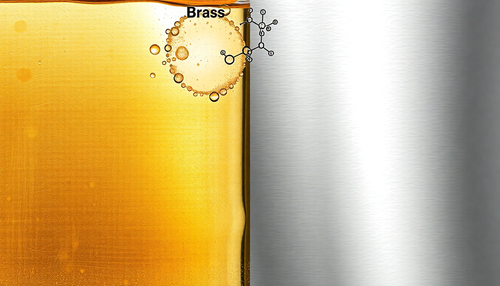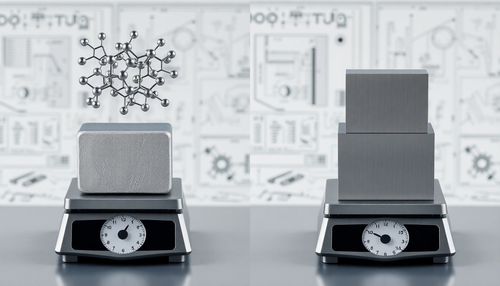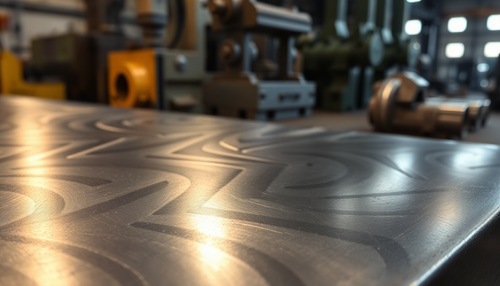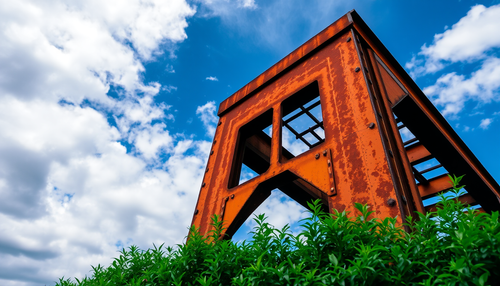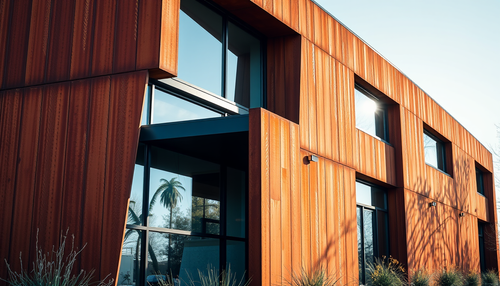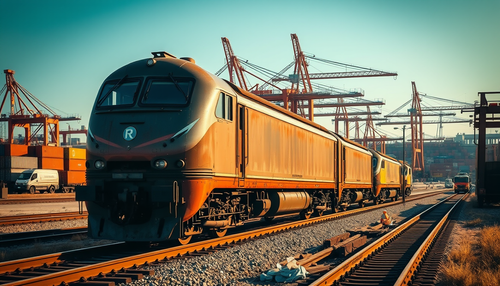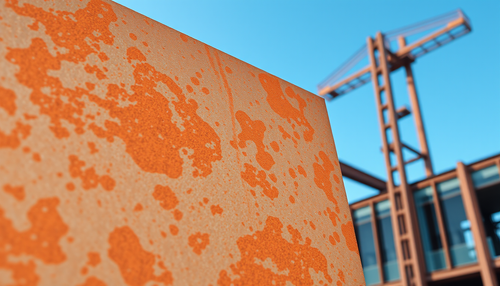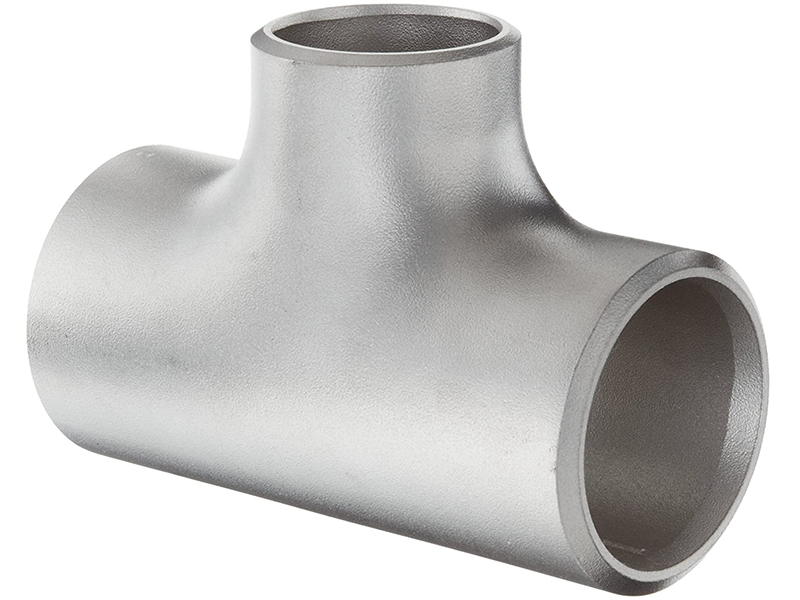
AISI 304 VS 304L Stainless Steel (UNS S30403)
AISI 304 and 304L (SS304L) are austenitic stainless steels and also known as 18/8 stainless steel. This article will introduce the differences between 304 and 304L stainless steel (304 vs 304L) in terms of chemical composition, mechanical properties, corrosion resistance and weldability.
AISI 304L stainless steel is an ultra-low carbon version of SS 304 (carbon content: ≤ 0.08%). “L” is the abbreviation for “Low Carbon” and the maximum carbon content is 0.03%. The main purpose is to prevent carbide precipitation and improve weldability and corrosion resistance.
Difference Between Chemical Composition 304 and 304L
The table below provides the chemical composition of 304L, the maximum carbon content is 0.03%, while 304 is a maximum of 0.08%, other than that, the other compositions are the same.
| Chemical Composition 304L,% | ||||||||||
| ASTM type | AISI (UNS) | C, ≤ | Yes, ≤ | Mn, ≤ | P, ≤ | S, ≤ | Cr | No | N, ≤ | Grades |
| ASTM A240/A240M | 304L (UNS S30403) | 0.03 | 0.75 | 2:00 | 0.045 | 0.030 | 17.5-19.5 | 8.0-12.0 | 0.10 | stainless steel plate, Foil and Strip for Pressure Vessels |
| ASTM A276A/276M | 0.03 | 1.00 | 2:00 | 0.045 | 0.030 | 6pm-8pm | 8.0-12.0 | – | Stainless Steel Bars and Shapes | |
| ASTM A580/A580M | 0.03 | 1.00 | 2:00 | 0.045 | 0.030 | 6pm-8pm | 8.0-12.0 | 0.10 | stainless steel wire | |
| ASTM A666 | 0.03 | 0.75 | 2:00 | 0.045 | 0.030 | 6pm-8pm | 8.0-12.0 | 0.10 | Annealed or cold-worked austenitic stainless steel sheet, strip, plate and flat bar | |
| ASTM A959 | 0.03 | 1.00 | 2:00 | 0.045 | 0.030 | 17.5-19.5 | 8.0-12.0 | – | Forged Stainless Steels | |
| ASTM A473 | 0.03 | 1.00 | 2:00 | 0.045 | 0.030 | 6pm-8pm | 8.0-12.0 | – | Stainless steel forgings | |
| ASTM A314 | 0.03 | 1.00 | 2:00 | 0.045 | 0.030 | 6pm-8pm | 8.0-12.0 | 0.10 | Billets and bars for forging | |
Properties of 304 VS 304L Stainless Steel
The following tables summarize the properties of 304 vs 304L stainless steel, including physical and mechanical properties.
Physical properties
The physical properties of AISI 304L stainless steel are given in the following lists, including density, melting point and magnetic permeability.
| Physical Properties of SS304L | |
| Density, g/cm3 (lb/in.3) | 8.03 (0.29) |
| Melting point, °C (°F) | 1400-1450 (2550-2650) |
| Magnetic permeability | 1.02 (approximate) |
Mechanical properties
The mechanical properties of 304 vs 304L stainless steel at room temperature are listed in the following tables.
| Mechanical Properties 304 vs 304L | |||||||||
| ASTM | AISI type | Conditions | Tensile strength, MPa (ksi), ≥ | 0.2% yield strength, MPa (ksi), ≥ | Elongation by 50 mm (2 in.), %, ≥ | Area Reduction, %, ≥ | Brinell hardness (HBW), ≤ | Rockwell hardness (HRBW), ≤ | Product Forms |
| ASTM A276/A276M | 304 | Annealed, hot finished | 515 (75) | 205 (30) | 40 | 50 | – | – | Bars and Shapes |
| 304L | 485 (70) | 170 (25) | 40 | 50 | – | – | |||
| 304 | Annealed, cold finished, diameter ≤ 12.7 mm (0.5 in.) | 620 (90) | 310 (45) | 30 | 40 | – | – | ||
| 304L | |||||||||
| 304 | Annealed, cold finished, Diameter > 12.7 mm (0.5 in.) | 515 (75) | 205 (30) | 30 | 40 | – | – | ||
| 304L | 485 (70) | 170 (25) | 30 | 40 | – | – | |||
| ASTM A580/A580M | 304 | Annealed | 520 (75) | 210 (30) | 35 | 50 | Wire | ||
| 304L | 485 (70) | 170 (25) | 35 | 50 | – | – | |||
| 304 | Cold finished | 620 (90) | 310 (45) | 30 | 40 | – | – | ||
| 304L | |||||||||
| ASTM A240/A240M | 304 | 515 (75) | 205 (30) | 40 | – | 201 | 92 | Plate, Sheet and Strip | |
| 304L | 485 (70) | 170 (25) | 40 | – | 201 | 92 | |||
| ASTM A473/A473M | 304 | Annealed, sections ≤ 5 in. (127mm) | 515 (75) | 205 (30) | 40 | 50 | – | – | Forged |
| Annealed, sections > 5 in. (127mm) | 70 (485) | ||||||||
| 304L | 450 (65) | 170 (25) | 40 | 50 | – | – | |||
Heat treatment
Recommended annealing temperatures for AISI 304L stainless steel are 1010-1120°C (1850-2050°F).
Hardening: SS304L cannot be hardened by heat treatment, but can be hardened by cold working.
Welding
Both 304 and 304L stainless steel can be easily welded with or without filler metal. If necessary, the recommended filler metal for SS304 is E308 and SS304L is E308L. Weldments that are too large or too complex for complete annealing require stress relief, 304 weldments are easily sensitized, and intergranular corrosion or stress-assisted intergranular corrosion occurs. It is strongly recommended to use stable (type 321, 347 or 348) or low carbon (SS304L or SS316L) stainless steel, especially for those requiring long-term stress relief.
Corrosion resistance
Due to its ultra-low carbon content, SS304L has better corrosion resistance than SS 304.
The following table lists the corrosion rates of 304 vs 304L stainless steel in boiling 50% NaOH solution.
| Material | Base metal | Weld | ||
| mm/year | mils/year | mm/year | mils/year | |
| SS304 (UNS S30400) | 3.0 | 118 | 3.3 | 130 |
| SS304L (UNS S30403) | 1.8 | 71 | 2.2 | 87 |
| SS316 (UNS S31600) | 3.1 | 123.6 | 3.5 | 136.8 |
| SS316L (UNS S31603) | 1.97 | 77.6 | 2.17 | 85.4 |
Machinability (machining)
The following tables show the machinability (machinability) of 304 and 304L stainless steel.
| Rated speeds and feeds for turning a variety of steels and cast irons with single-point and high-speed steel (HSS) case tools | |||||||||
| Material | Hardness, HB | Illness | Cutting depth, mm (in.) | high speed steel tool | Tool material | ||||
| Speed | To feed | ||||||||
| m/min | sfm | mm/rotation | in./rev | ISO | AISI | ||||
| Forged austenitic: 201, 202, 301, 302, 304, 304L, 305, 308, 321, 347, 348, 384, 385 |
135-185 | Annealed | 1 (0.04) | 34 | 110 | 0.18 | 0.007 | S4, S5 | M2, M3 |
| 4 (0.15) | 27 | 90 | 0.4 | 0.015 | |||||
| 8 (0.30) | 21 | 70 | 0.5 | 0.02 | |||||
| 16 (0.625) | 17 | 55 | 0.75 | 0.03 | |||||
| Rated speeds and feeds for turning a variety of steels and cast irons with single-point and carbide-tipped case tools | ||||||||||||||||
| Material | Hardness, HB | Illness | Carbide Tool | |||||||||||||
| Uncoated | Coated | |||||||||||||||
| Speed | To feed | Tool material class | Speed | To feed | Tool material class | |||||||||||
| Soldier | Indexable | |||||||||||||||
| m/min | sfm | m/min | sfm | mm/rotation | in./rev | ISO | W | m/min | sfm | mm/rotation | in./rev | ISO | W | |||
| Forged austenitic: 201, 202, 301, 302, 304, 304L, 305, 308, 321, 347, 348, 384, 385 |
135-185 | Annealed | 105 | 350 | 120 | 400 | 0.18 | 0.007 | K01, M10 | C-3 | 160 | 525 | 0.18 | 0.007 | CK01, CM10 | CC-3 |
| 100 | 325 | 105 | 350 | 0.4 | 0.015 | 135 | 450 | 0.4 | 0.015 | |||||||
| 76 | 250 | 84 | 275 | 0.5 | 0.02 | C-2 | 105 | 350 | 0.5 | 0.02 | CC-2 | |||||
| 60 | 200 | 64 | 210 | 0.75 | 0.03 | K20, M20 | – | – | – | – | – | – | ||||
| Rated speeds and feeds for turning a variety of steels and cast irons with ceramic tools | ||||||||
| Material | Hardness, HB | Illness | Cutting depth, mm (in.) | Speed | To feed | Type of ceramic | ||
| m/min | sfm | mm/rotation | in./rev | |||||
| Austenitic: 201, 202, 301, 302, 304, 304L, 305, 308, 321, 347, 348, 384, 385 |
135-185 | Annealed | 1 (0.040) | 425 | 1400 | 0.13 | 0.005 | Cold pressed alumina |
| 4 (0.150) | 275 | 900 | 0.25 | 0.010 | ||||
| 8 (0.300) | 185 | 600 | 0.40 | 0.015 | ||||
| Rated speeds and feeds for turning a variety of steels and cast irons with high-speed steel and carbide cutting and forming tools | ||||||||||||||
| Material | Hardness, HB | Illness | Speed | Feed, mm/rev (in/rev) | Tool material class | |||||||||
| Cutting tool width | Form tool width | |||||||||||||
| m/min | sfm | 1.5 mm (0.062 in.) | 3 mm (0.125 in.) | 6 mm (0.250 in.) | 12 mm (0.500 in.) | 18 mm (0.750 in.) | 25 mm (1.00 in.) | 35 mm (1.50 in.) | 50 mm (2.00 in.) | ISO | AISI or C | |||
| Austenitic: 201, 202, 301, 302, 304, 304L, 305, 308, 321, 347, 348, 384, 385 |
135-185 | Annealed | 26 | 85 | 0.033 (0.0013) | 0.041 (0.0016) | 0.050 (0.002) | 0.050 (0.002) | 0.041 (0.0016) | 0.036 (0.0014) | 0.030 (0.0012) | 0.025 (0.001) | S4, S5, K40, M40 | M2, M3, C-2 |
| 84 | 275 | |||||||||||||
| Speeds and feeds for trepanning deep holes of various steels with high-speed tool steels and carbide tools | ||||||||
| Material | Hardness, HB | Illness | Speed | To feed | Tool material class | |||
| m/min | sfm | mm/rotation | in./rev | ISO | AISI or C | |||
| Austenitic: 201, 202, 301, 302, 304, 304L, 305, 308, 321, 347, 348, 384, 385 |
135-185 | Annealed | 20 | 65 | 0.075 | 0.003 | S4, S5 | M2, M3 |
| 84 | 275 | 0.15 | 0.006 | K20 | C-2 | |||
| 225-275 | Cold drawing | 18 | 60 | 0.075 | 0.003 | S4, S5 | M2, M3 | |
| 69 | 225 | 0.10 | 0.004 | K20 | C-2 | |||
| Nominal speeds for thread grinding | |||||||||
| Material | Hardness, HB | Illness | Thread designation | ANSI Wheel Identification | Wheel speed | Working speed | |||
| Step, mm | Threads per 25 mm (1 in.) | IN | sfm | m/min | sfm | ||||
| Forged austenitic stainless steels: 201, 202, 301, 302, 302B, 304, 304L, 305, 308, 309, 309S, 310, 310S, 314, 316, 316L, 317, 321, 330, 347, 348, 384, 385 |
135-275 | Annealed or cold drawn | 6-2.5 | 4-12 | A90RB | 43 | 8,500 | 1.2 | 4.0 |
| 2-1 | 13-27 | A120SB | 46 | 9,000 | |||||
| 0.8-0.45 | 28-63 | A180TB | 48 | 9500 | |||||
| 0.4-0.35 | 64-80 | A220UB | 51 | 10,000 | |||||
| Recommended speeds and feeds for facing alloys with high-speed steel and carbide cutters | |||||||||||||
| Material | Hardness, HB | Illness | Cutting depth, mm (in.) | high speed steel tool | Carbide Tool | ||||||||
| Uncoated | Coated | ||||||||||||
| Speed | Feed per tooth, mm (in.) | Tool material class, ISO (C) | Speed, m/min (sfm) | Feed per tooth, mm (in.) | Tool material class, ISO (C) | ||||||||
| Speed, m/min (sfm) | Feed per tooth, mm (in.) | Tool material, ISO (AISI) | Soldier, m/min (sfm) | Indexable, m/min (sfm) | |||||||||
| Forged austenitic stainless steels: 201, 202, 301, 302, 304, 304L, 305, 308, 321, 347, 348, 384, 385 |
135-185 HB | Annealed | 1 (0.040) | 40 (130) | 0.20 (0.008) | S4, S2 (M2, M7) | 130 (430) | 145 (475) | 0.20 (0.008) | K10, M20 (C-2) | 215 (700) | 0.20 (0.008) | CK10, CM20 (CC-2) |
| 4 (0.150) | 30 (100) | 0.30 (0.012) | S4, S2 (M2, M7) | 100 (325) | 110 (360) | 0.30 (0.012) | K20, M30 (C-2) | 145 (475) | 0.30 (0.012) | CK20, CM30 (CC-2) | |||
| 8 (0.300) | 24 (80) | 0.40 (0.016) | S4, S2 (M2, M7) | 70 (230) | 85 (280) | 0.40 (0.016) | K30, M40 (C-2) | 105 (350) | 0.40 (0.016) | CK30, CM40 (CC-2) | |||
| Recommended speeds and feeds for milling alloy plates (or planes) with high-speed steel cutters | ||||||||
| Material | Hardness, HB | Illness | Cutting depth, mm (in.) | Speed | Feed per tooth | High speed steel tool material | ||
| m/min | sfm | mm (in.) | ISO | AISI | ||||
| Forged austenitic stainless steels: 201, 202, 301, 302, 304, 304L, 305, 308, 321, 347, 348, 384, 385 |
135-185 HB | Annealed | 1 (0.040) | 55 | 180 | 0.15 (0.006) | S4, S2 | M2, M7 |
| 4 (0.150) | 43 | 140 | 0.20 (0.008) | |||||
| 8 (0.300) | 34 | 110 | 0.25 (0.010) | |||||
| Recommended speeds and feeds for end (peripheral) milling of alloys with high-speed steel and carbide cutters | |||||||||||||||
| Material | Hardness, HB | Illness | Radial depth of cut, mm (in.) | high speed steel tool | Carbide Tool | ||||||||||
| Speed, m/min (sfm) | Feed, mm/tooth (in./tooth), in cutter diameter of: | Tool material, ISO (AISI) | Speed, m/min (sfm) | Feed, mm/tooth (in./tooth), in cutter diameter of: | Tool material, ISO (C) | ||||||||||
| 10 mm (0.375 in.) | 12 mm (0.5 in.) | 18 mm (0.75 in.) | 25-50 mm (1-2 in.) | 10 mm (0.375 in.) | 12 mm (0.5 in.) | 18 mm (0.75 in.) | 25-50 mm (1-2 in.) | ||||||||
| 201, 202, 301, 302, 304, 304L, 305, 308, 321, 347, 348, 384, 385 |
135-185 HB) | Annealed | 0.5 (0.020) | 34 (110) | 0.025 (0.001) | 0.050 (0.002) | 0.102 (0.004) | 0.13 (0.005) | S4, S5, S2 (M2, M3, M7) | 110 (360) | 0.013 (0.0005) | 0.025 (0.001) | 0.050 (0.002) | 0.102 (0.004) | K20, M20 (C-2) |
| 1.5 (0.060) | 24 (80) | 0.050 (0.002) | 0.075 (0.003) | 0.13 (0.005) | 0.15 (0.006) | 82 (270) | 0.025 (0.001) | 0.050 (0.002) | 0.075 (0.003) | 0.13 (0.005) | |||||
| diam/4 diam/4 |
21 (70) | 0.025 (0.001) | 0.050 (0.002) | 0.102 (0.004) | 0.13 (0.005) | 72 (235) | 0.025 (0.001) | 0.038 (0.0015) | 0.063 (0.0025) | 0.102 (0.004) | |||||
| diam/2 diam/2 |
18 (60) | 0.025 (0.001) | 0.038 (0.0015) | 0.075 (0.003) | 0.102 (0.004) | 67 (220) | 0.013 (0.0005) | 0.025 (0.001) | 0.050 (0.002) | 0.075 (0.003) | |||||
Forms
SS 304L Stainless Steel Applications: Food processing equipment, in particular equipment for brewing, milk processing and brewing, weaving, welding screens, for mining, quarrying and water filtration, pressure vessels, water tanks storage, heat exchangers, piping systems, flanges, fittings, valves and pumps, elbow, tee pipe and tee reducer, etc.
AISI 304L stainless steel equivalent
AISI 304L stainless steel equivalent to European EN (German DIN EN, British BSI EN, France NF EN), ISO, Japanese JIS and Chinese GB standard (for reference).
| Grade equivalent to AISI 304L | |||||||||||||||||
| USA | European Union | ISO | Japan | China | Australia | India | Russia | Korea | |||||||||
| Standard | Type | Standard | Class (Steel Number) | Standard | Note (ISO number) | Standard | Note | Standard | Note | Standard | Note | Standard | Note | Standard | Note | Standard | Note |
| AISI-SAE; ASTM |
304L (UNS S30403) |
EN 10088-1; EN 10088-2; EN 10088-3 | X2CrNi18-9 (1.4307); X2CrNi19-11 (1.4306) |
ISO 15510 | X2CrNi19-11 (4306-304-03-I) | JIS G4303; JIS G4304; JIS G4305; | SUS304L | GB/T 20878; GB/T 1220; GB/T 3280 |
00Cr19Ni10; 022Cr19Ni10 (New name) |
||||||||



